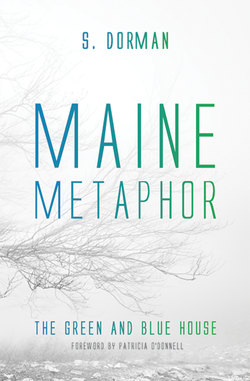Читать книгу Maine Metaphor: The Green and Blue House - S. Dorman - Страница 5
На сайте Литреса книга снята с продажи.
Foreword
ОглавлениеTwenty-five years ago, as a new Assistant Professor of Creative Writing in Farmington, Maine, I encountered a woman who wanted nothing more than to write about Maine. Susan Dorman seemed to emerge from the Maine woods and streams, as New England as the land, but she had actually recently moved with her husband and two adolescent sons to economically-depressed western Maine from economically-depressed blue-collar Pennsylvania.
Susan’s husband found work as an electrician in a paper mill and Susan, completing a self-designed major of “Maine Studies,” began a directed study with me. As she recalls it, she wanted to write about Maine’s “mythological view in literature.” I suggested she begin a study of journals instead, and keep a journal of her own. From that, this book grew, taking on its own life, a life of yearning, digressions spurred by curiosity, unexpected epiphanies. Never sentimental, Dorman’s prose reflects the mystery Maine is to her, and something essential to its character. She writes that Maine “paralyzed” her at first, freezing her hard as a rock, but in this collection of brief, surprising essays, Dorman uncovers not only a deep understanding of Maine, but a hard-won love. The book is a record of her thawing, her gradual falling in love with Maine as she comes to understand herself through its landscape.
This book is not a memoir about Susan and her family; it is a book about the landscape of Maine, as portrayed in the words of one with an uncommonly acute ability to observe, to see, and one with a language that is never commonplace, yet never showy; that is always in service to what it sees. She writes in one chapter that she wants to “honor” Earl, the illiterate man who works at the local dump, and it occurs to me that in every chapter, every page and every word, she wants to honor not only the people but the landscape, the rocks and rivers and especially the trees, of her adopted state of Maine. In this she succeeds, as well as any writer I’ve ever encountered.
She calls her book Maine Metaphor: The Green and Blue House, and the title is apt, for she has the artist’s way of seeing metaphorically. Dorman writes, “Writers are always turning over rocks, peering into holes, tickling the backs of someone’s knees looking for metaphors,” yet she doesn’t search hard for metaphors: she seems to have the kind of vision that sees metaphor everywhere in the natural world. As she struggles to see what Maine is, and to hear its speech, she can’t help but see it as a metaphor for the interior life, for the deepest part of her self.
Susan Dorman, a contemporary Henry David Thoreau? Perhaps—but a Thoreau who tramps the earth of New England with an awareness of her husband, working deep in the bowels of a paper mill, allowing her the luxury to take in the towns, the hills and sky of her adopted state of Maine; a Thoreau who can’t help but worry how the bills will be paid, and how her sons are adapting to this new land. A Thoreau who is acutely aware of the irony of the fact that, while her husband works at turning Maine’s trees into money, high on a catwalk above massive digesters giving off hydrogen sulfide and other gases in the hot, oppressive beast of the paper mill, she hikes and daydreams under those trees, learning all she can about them to bring them to us unharmed, to do them honor.
Dorman writes that her goal is to write something “deep, fine and detailed, on Maine, drawn from the records—geological, botanical, historic, prehistoric.” This list does describe her book, but it leaves out one thing: the personal voice and life of the narrator, who comes achingly alive for us in response to this state, this land she loves and struggles with. Her goal ultimately is “spiritual quarry,” which she consumes while “still afoot.”
She also writes, “A sense of wonder needs constant renewal.” In her searching observations of the natural world, Dorman finds wonder in places both distant (within a small plane, circling above its shadow below), and near (the pale green ovary inside the sepals of the day lily), and she brings that wonder to her reader. She watches and remembers the world she sees. A cricket in the night tells her, “You might write about me;” she listens, and does.
Patricia O’Donnell,BFA Director of Creative Writing,University of Maine Farmington
